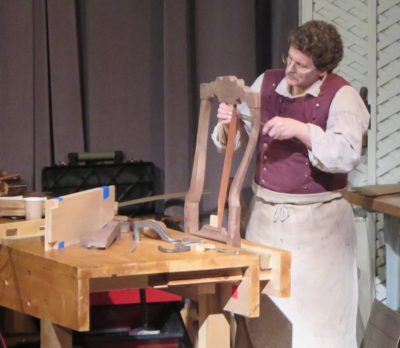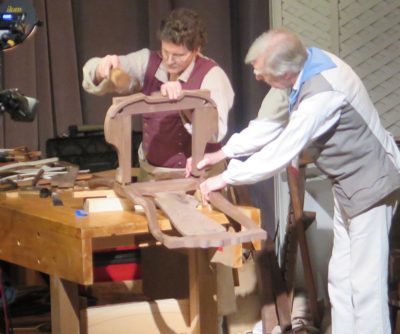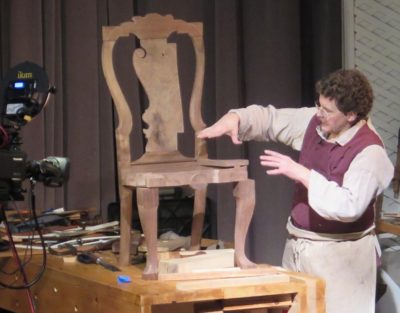Williamsburg Snapshot – Making A Late Baroque Chair
In the next four postings I will be highlighting the contributions by the CW craftsmen to the Working Wood in the 18th Century gathering. They work under the burdensome (?) expectation of excellence on our part, as for years they have not only put on the show as the impresarios but are expected to be stellar in their on-stage performances. It’s a lot of weight on their shoulders, and they pull it off every time! You can tell they are comfortable with audiences, I don’t mind folks watching me work, but the contant interruptions they endure must be maddening. It disrupts any work flow and extends a project’s timeline by a logarithmic factor.

First up of the Colonialista soloists was Brian Weldy, demonstrating the steps to designing and building a late Baroque (aka “Queen Anne”) chair in walnut. As with all the presentations I found much to be learned from the project, although it is unlikely I will ever build one. Nevertheless Brian’s dealing with the sumptuously curvilinear form was instructive.


His layout of the serpentine center splat was particularly of interest to me as I have a pair of 16th Century Chinese horseshoe chairs on my bucket list.

He called on Kaare to provide a second pair of hands for the assembly of the chair seat rail and legs. I was fascinated by the wooden blocks left on the serpentine seat rail to provide striking anf clampning surfaces. These would be carved off once the assembly was completed. I thought it was an ingeniuos and efficient solution to a problem. Maybe everyone else already knew it, but it is a technique now residing firmly in the memory bank.

With the chair assembled Brian addressed the seat construction and lofting, and his time was done.


Join the Conversation!